America’s infrastructure is aging, and like anything that ages, it needs more upkeep. Almost everyone has been impacted in some way by failing or under inspected infrastructure. It can be something as minor as a power outage, spending hours on a two-hour train ride because the signaling system broke down or sinking hundreds of dollars into car repairs after hitting a pothole. Or an infrastructure failure can be as catastrophic as national disasters like the Oroville Dam Collapse, the Louisiana Levee Break during Hurricane Katrina, or the mass power outages of 2021 in Texas. And then there are underserved communities who don’t even have the infrastructure they need to thrive in a modern world.
If you get the sense that the way we inspected, built, and tested our infrastructure fifty years ago, when most of it was new, may no longer be adequate—you are right.
“Currently, 42% of all bridges are at least 50 years old, and 46,154, or 7.5% of the nation’s bridges, are considered structurally deficient, meaning they are in “poor” condition,” stated the 2021 Report Card for America’s Infrastructure. “The nation needs a systematic program for bridge preservation like that embraced by many states, whereby existing deterioration is prioritized, and the focus is on preventive maintenance.”
Billions of dollars have been sunk into America’s infrastructure over the years, but the results haven’t been sufficient to keep up with its needs and the needs of the people, especially as increasing extreme weather events, caused by climate change, test and break its limits. Yet, we still ask infrastructure inspectors to put themselves in harm’s way by climbing towers, rappelling from bridges, and riding in bucket trucks to make sure our infrastructure is safe—even when technological alternatives, namely drones, can make these tasks safer and more efficient. As Congress debates the American Jobs plan, there is a new opportunity to invest in the future of infrastructure: not only in the structures themselves but also in modernizing the processes that maintain them.
“The United States of America is the wealthiest country in the world, yet we rank 13th when it comes to the overall quality of our infrastructure,” stated the White House in ‘FACT SHEET: The American Jobs Plan.’ “After decades of disinvestment, our roads, bridges, and water systems are crumbling. Our electric grid is vulnerable to catastrophic outages. Too many lack access to affordable, high-speed Internet and to quality housing. The past year has led to job losses and threatened economic security, eroding more than 30 years of progress in women’s labor force participation. It has unmasked the fragility of our caregiving infrastructure. And, our nation is falling behind its biggest competitors on research and development (R&D), manufacturing, and training. It has never been more important for us to invest in strengthening our infrastructure and competitiveness, and in creating the good-paying, union jobs of the future.”
With President Biden’s infrastructure proposal, America is now poised to spend a historic amount of money on building and reinvigorating its infrastructure and human capital. As exciting and revolutionary as this proposal is—something we haven’t seen since The New Deal—putting that kind of money into legacy procedures and workflows isn’t going to get us there. To achieve the results of The New Deal, we need to use the new technology that is available to us today.
With an additional emphasis on drones, Biden’s proposal would no longer be geared toward just fixing and maintaining our infrastructure, but rather modernizing America—creating innovative, future-proof, technologically and environmentally sustainable jobs and infrastructure. It would be proactive rather than reactive to infrastructure needs and updates. And it would stimulate the growth of a new category of safe inspection jobs in the United States of America.

Drones Are the Only Way to Inspect American Infrastructure in Time
The situation with bridges and much of our infrastructure is a bit like eating the snakes’ tail. By the time we are finished with one round of repairs, we have to start over again. Developing a systematic program of preventative maintenance as the report card suggests, requires innovative thinking to help us get ahead of the maintenance. In order to multiply our efforts and reduce costs, we need to work smarter rather than harder by leveraging technology—that is, we need to get more output with less input. Drones are becoming an ideal tool to do just that.
As a cutting-edge, low-emission, comparatively inexpensive force multiplier, the drone industry is primed to evolve the way America addresses its infrastructure challenges in a number of ways. As we have published extensively on Commercial UAV News, drones can gather essential for data such missions as inspecting bridges, rail, power lines, pipelines, hyperbolic cooling towers, and cell towers; tracking progress at construction sites, gathering data for digital twins, or even tying rebar; going into mines and other underground environments; tracking environmental resources; monitoring important assets inside and outside in places such as ports; managing inventory; inspecting manned aircraft; assessing damage and searching for survivors after natural disasters; and even providing Internet services to underserved regions or areas impacted by outages. But the challenge today is that there are just too many jobs for today’s pilots—to meet the infrastructure needs of the 21st century, we need to create jobs in the drone industry.
To give an idea of the scale we are dealing with, America has 160,000+ bridges, 140,000 miles of rail, 4 million miles of road, 835,000 kilometers of pipeline, 550,000 cell towers, 6,500 large active mines, 90,000 oil and gas wells, 60,000 substations, between 160,000 and 200,000 miles of high-voltage power lines and an additional 5.5 million miles of residential power line. There is no way that we can inspect all this infrastructure effectively with fifty-year old snooper trucks and workers climbing assets on ropes. And if we cannot inspect the infrastructure reliably, we cannot reasonably expect to spend repair dollars with any form of government accountability.
Primary demand areas for enterprise drones (non-exhaustive list) | |||
|---|---|---|---|
Use Case | Application | Volume | Source |
Transportation | Miles of road | 4,000,000 | |
Transportation | Number of bridges | 614,387 | |
Transportation | Miles of rail | 140,000 | |
Telecom | Number of cell towers | 550,000 | |
Utilities | Number of Nuclear Reactors | 98 | |
Utilities | Number of substations | 60,000 | |
Utilities | miles of lines | 200,000 | |
Construction | # of workers | 11,300,000 | |
Mining | # of active mines (large) | 6,500 | |
Mining | # of active mines (Small) | 6,500 | |
Agriculture | # of farms in market | 400,000 | |
Oil & Gas | km of pipelines | 835,000 | |
Oil & Gas | Number of well sites | 900,000 | |
Residential Real Estate | Number of homes | 138,450,000 | |
Commercial Site Security | Number of sites | 233,333 | |
Infrastructure Drones Make America Safer, Wealthier, and More Sustainable
While the inspection volume above is a daunting task for a workforce using ropes and snooper trucks to contemplate, it's scope and scale should also have a similar effect on America’s 223,634 registered commercial drone pilots, which are distributed across public safety, defense, cinematography, and enterprise users. One look at the table above should make clear that there is no way our current population of pilots can inspect all this infrastructure at the pace required—we are going to need a combination of more pilots plus better technology that enables pilots to get more jobs done in less time.
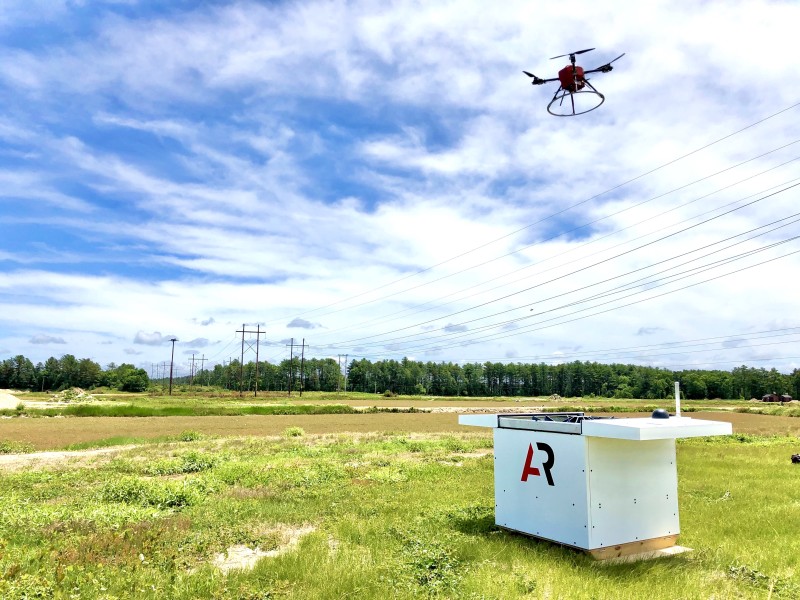
American Robotics
"At Sundt, we are quickly starting new projects and the use of drones in construction is growing just as rapidly," began Dean Miller of Sundt Construction. "There will come a moment in the near future that we will not be able to keep up with demand. This is why we are working so closely with autonomous drone companies like Skydio.”
Across the industry, increasing levels of autonomy are helping drone operators complete more jobs in less time to meet the growing demands brought from America’s renewed focus on infrastructure.
Autonomous Drones Are Force Multipliers that Cover More Ground Faster and with Better Outputs
New autonomous drones, pioneered by American drone powerhouses such as Skydio, American Robotics, Freefly, and DroneDeploy, offer the promise of enabling pilots to complete more missions per year than ever before. And by making drones easier to fly, autonomy has turned drone piloting into a much more accessible profession for people of all backgrounds and economic levels—making drones an essential tool for SMEs. Instead of automating inspection jobs, drones are making those very jobs safer and more productive—and when workers are more productive, there are more reasons to hire them. And because infrastructure is not confined to urban areas, neither are these jobs—drone piloting is a growing profession in rural communities across the United States.
“I see us slowly growing,” stated Benjamin Spain, UAS Program Manager, Division of Aviation, at North Carolina Department of Transportation. “As the technology gets easier/more autonomous, we will be able to grow into more use cases. I do not believe dedicated remote pilots are required for the growth, but rather the people already doing the work will be better able to incorporate drones into their workflow.”
The drone industry can make infrastructure job opportunities more accessible for a variety of communities throughout the pipeline including manufacturing, maintenance, piloting, and field work. Because they go where humans don’t want to go, drones transform dull, dirty, difficult, and dangerous jobs into attractive opportunities for a diverse set of people, enabling them to be subject matter experts and elevating their position, whether that is by making existing jobs less dangerous, challenging, or tedious or by adding new innovative jobs.
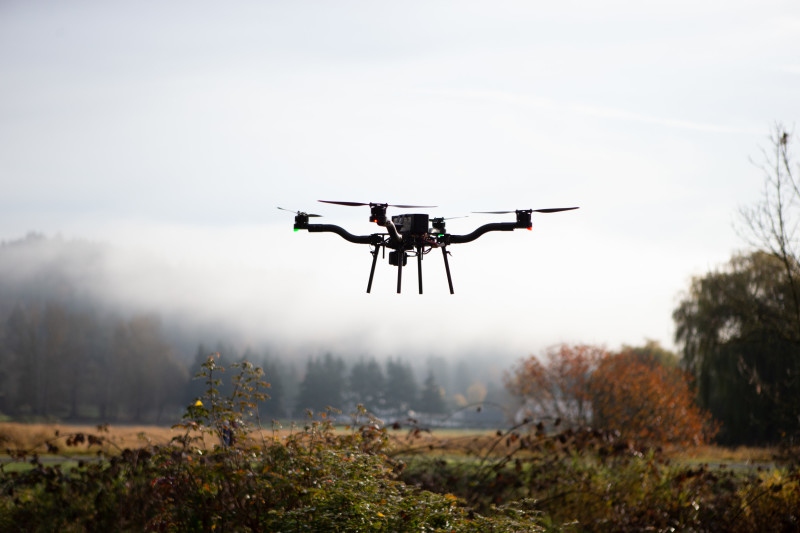
Freefly
And the increasing levels of autonomy on board the latest models to reach the market mean that the barriers to entry—namely, training—are much lower with today’s technology than ever before. Jarvis Worton, drone subject matter expert at Jacobs Engineering, noted that using autonomous software from American drone provider, Skydio, will have ripple effects across his company:
“3D Scan is going to save us so much time on image capture for 3D Reconstructions, while adding safety for our teams and assets. The software knows how to capture the right data efficiently, and we can view the coverage map in the field, to make sure that we get all the data we need the first time around.”
He also pointed out that a less experienced operator is able to perform these missions, meaning that data is available sooner and pilots are more productive upon hiring.
Although some have expressed concerns about potential job losses brought about by automation, Dean Miller of Sundt Construction, a national general contractor, argues the opposite:
"Sundt Construction has used drones as a force multiplier by allowing very skilled people that are doing repetitive tasks in the field to work on more complex tasks and use their full potential," stated Miller. " We are giving ourselves the opportunity to view our job sites at a more advanced level and give ourselves better information to work with. This allows us to stay on schedule and within budget."
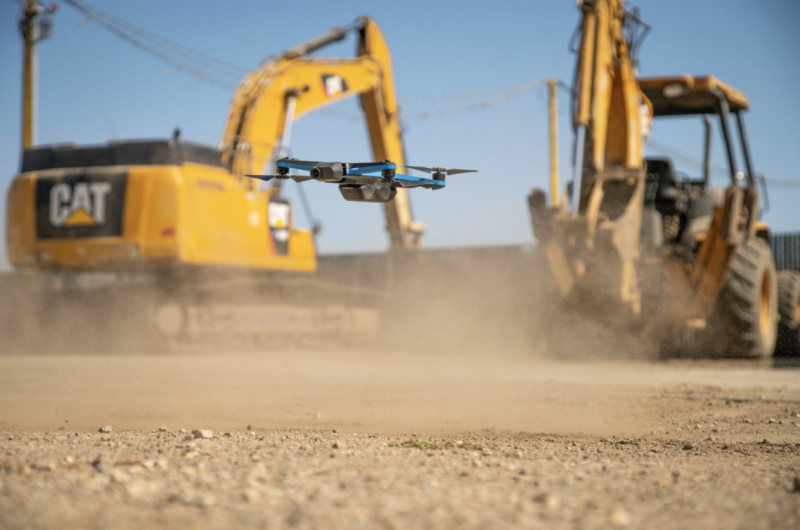
Skydio
When gathering inspection data reaches these levels of efficiency, the standard for inspection and repair will rise—instead of biennial or even more infrequent inspections (many distribution towers in America are inspected on 12-year cycles today), infrastructure assets will be able to be inspected much more frequently, enabling a new era of preventative maintenance that is more efficient and safe. This is the long-term approach that unlocks the White House’s goal of enhancing infrastructure while creating the “good-paying union jobs of the future.”
Autonomous Drone Inspection Promotes Safe, High-Paying Jobs in Every State
Although Biden’s proposal calls for a “modernization of workforce development,” state and local governments will ultimately determine whether or not drones become part of the solution. The drone industry is ready to invigorate and modernize America’s infrastructure; we just need the green light. Drones will improve and preserve existing jobs while creating new ones.
While there is some overlap, the average bridge inspector salary in the US is $65,742, while a drone pilot can earn up to $79,000. As Ben Spain of the NCDOT suggests, there is also likely to be a broad spectrum of hybrid roles. In every state with infrastructure (all 50 of them), autonomous drones create an opportunity to make inspection more efficient, leading to more frequent inspections, and greater numbers of pilots entering safe, high-paying jobs.
Federal incentives can help encourage state and local governments to adopt drone technology faster, upskilling and expanding their existing inspection work forces. The administration has the opportunity to influence state and municipal governments to implement drone technology and workflows, as well as provide a clear path to transition workflows and employees into them, making space for new jobs and roles.
Drone Data Enables Greater Government Efficiency, Accountability, and Sustainability
The $2.7 trillion-dollar American Jobs Plan will be judged by its funders (we, the taxpayers) decades from now, not on the stipulations of its text, but on the quality of the infrastructure it was able to build and maintain for America. Drone technology can help make sure the downstream implementation of the Plan is worthy of the legislative effort put into passing it. In addition to unlocking the social benefits of preventative maintenance and creating jobs across America, adopting autonomous drones for inspection can help the government use federal dollars with greater efficiency, accountability, and sustainability.
Promoting Effective Execution with Government Funding
Rework consumes up to 9% of total project cost for a typical construction project. Against the $2.7 trillion dollar plan, this would amount to $243 billion dollars. While not all of the bill goes to construction, it should be clear that preventing rework is a serious economic lever that will have a substantial impact on the tax base. Drone operators in the construction industry such as Sundt Construction and Accurate Drone Solutions have found that conducting “as-built assessments” with drones can help construction project managers prevent rework. At scale, these operations are critical factors that can help ensure the infrastructure bill achieves its intended social impact.
Ensuring Government-Funded Repairs Are Completed to Specifications
With drones, not every tower or pole needs to be climbed, not every bridge needs to be scaled, and not every mine needs to be spelunked—teams only need to go when there is an actual issue detected. Further, AI-powered drones can autonomously fly around assets to generate complete inspection datasets that can be converted into 3D models. These 3D models are critical accountability tools that can allow oversight boards to remotely validate that repairs and construction projects were completed in full at a high level of quality.
Offsetting Unsustainable Methods
Not only are legacy methods dangerous to the workers who employ them, but they are also environmentally unsustainable. Heavy duty bucket trucks achieve approximately 5 miles per gallon, while manned helicopters consume fuel at a rate of less than two miles per gallon, which has been noted as far more consumption than actually required to carry the same payloads by drone. Today’s small drones are usually powered by electricity, and can be transported to job sites using much more fuel efficient commuter vehicles, which can achieve over 50 miles per gallon—a 90% reduction in emissions to complete the same inspection jobs. Combine this effect with the fact that drones have been documented to help manage renewable energy facilities, and the impacts to the environment will pay dividends for generations.
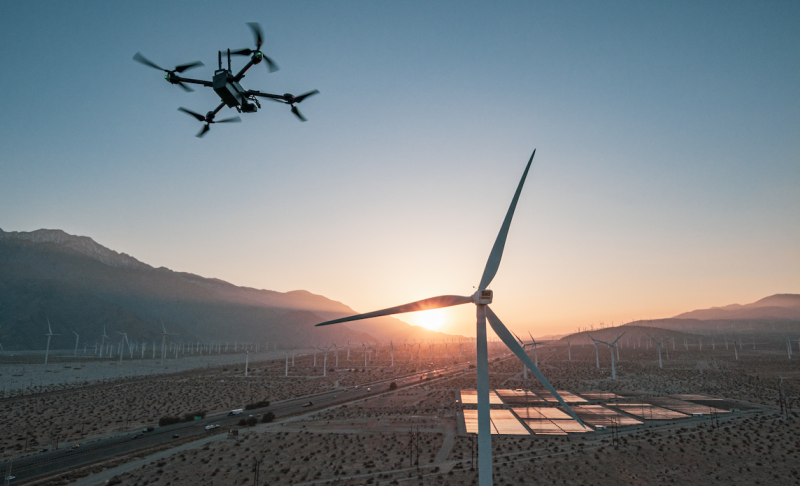
Skydio X2
Conclusion: Fulfilling the Promise of The American Jobs Plan
The American Jobs Plan is one of the most ambitious policy initiatives in American History. The extensive investment in American infrastructure comes at a time of need not only for repairing crumbling roads and bridges, but also of opportunity to create new professions full of safe, high-paying jobs in every state. And it also comes at a time when American technology providers such as Skydio, DroneDeploy, Freefly, and American Robotics are in a position to support American inspectors as they advance their profession into an era of preventive maintenance.
This legislative and technological inflection point is an opportunity to create untold thousands of jobs, streamline government infrastructure expenditure, protect the environment, and advance equitable distribution of both jobs and infrastructure. It is an important opportunity for everyone in the drone industry, today and tomorrow, to encourage their representatives to be a voice for the future of inspection.


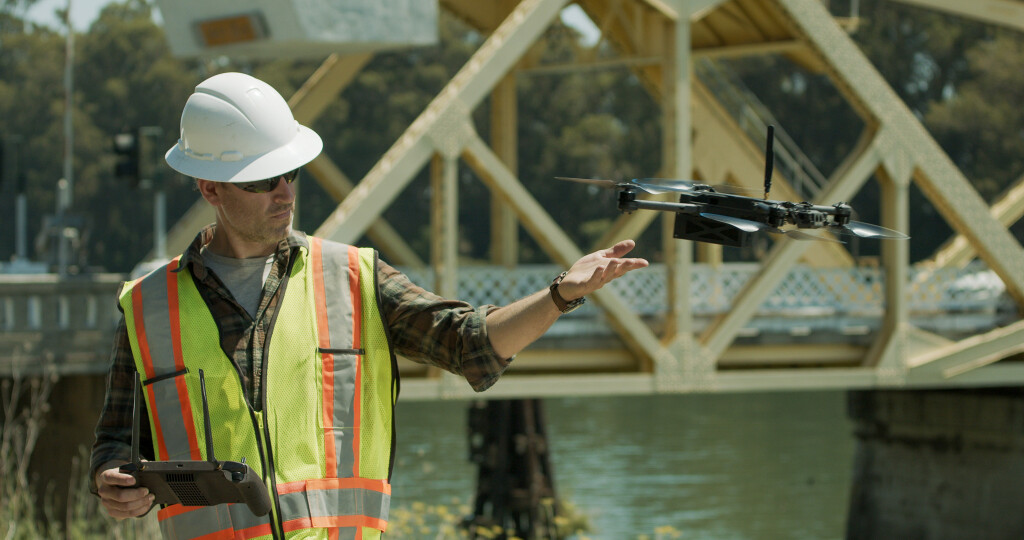

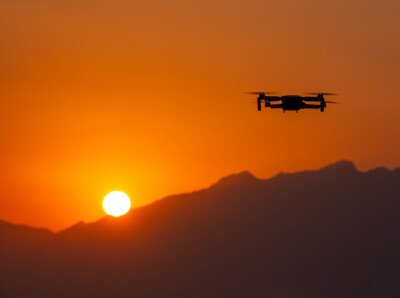

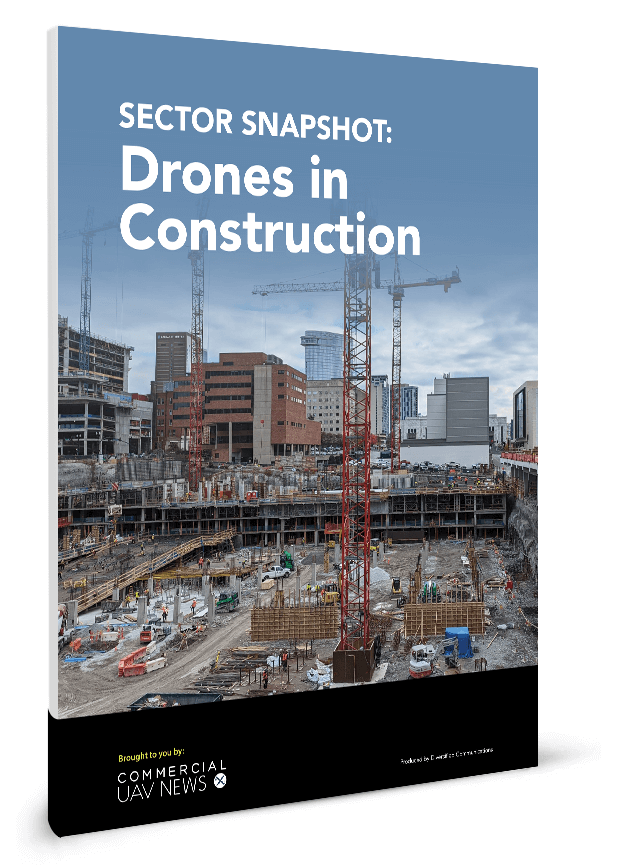






Comments